Plant Study
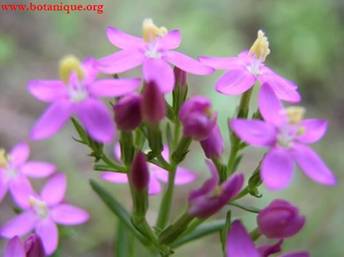
Latin Name- Lavandula angustifolia
Common Name- Lavender, English Lavender
Family- Lamiaceae (Mint Family) aka; Labiatae
Origin- Western Mediterranean basin, in rocky, calcareous areas
________________________________________________________________________
Body System Affiliations:
- Mood Disturbances
- Urinary
- Nervous System
- Gastrointestinal
________________________________________________________________________ Botanical Description: (2)
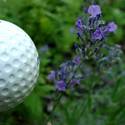
Habit- Herbaceous, Perennial
Size-Height 1-3 feet, Spread 2-3 feet
Leaf Arrangement- Opposite or Whorled
Leaf Type- Simple
Leaf Margin- Entire
Leaf Shape- Oblong
Leaf Venation- None or difficult to see
Leaf type and persistence- deciduous
Leaf Blade length- less than 2 inches
Leaf color- blue or blue green
Texture- Fine
________________________________________________________________________
Flower: (6)
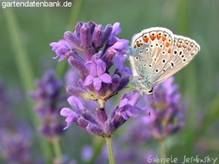
Flower color- Purple
Flower characteristic-Lavender, purple or white, ¼-½" long in groups of 6-10 on spikes in midsummer; aromatic
Fruit- Ornamentally insignificant, but dead-heading the spent flowers and immature fruits will prolong the season of bloom
Bark- Twig like
Twigs- Young stems are four-sided, but become thicker, rounded, rough, and semi-woody with age (Lavender is sometimes classified as a sub-shrub)
Underground Parts- Roots
_____________________________________________________________
Propagation: (1)

Light requirements- Plant grows in full sun
Soil tolerances- acidic, slightly alkaline, sand, loam, clay
Plant spacing 24-36 inches
Plant density- moderate
Growth rate- Slow
________________________________________________________________________
Ecology: (1)
Habitat- The plants grow best in a sunny location in a dry,
somewhat infertile soil. Protect the crowns with several inches
of mulch during the winter. Plants are more susceptible to
winter injury when grown in wet, heavy soil.
Range- From North America to China, to Europe
to Hungry to Bulgaria.
Native Where- Mediterranean
Ecological Relationships- Using this plant will work as a fly and tick repellent.
________________________________________________________________________
Western (European- American) Uses/ Relationships: (4)
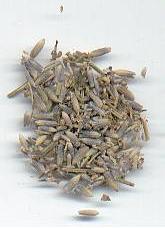
Food- Lavender Sugar: Grind 1 cup granulated sugar and 2 Tablespoons dried lavender buds together in a blender until the sugar takes on a purple hue and the lavender buds are no longer visible. Use extra for sweetening lemonade or tea or for baked goods.
Medicine: A tea infusion is used for headaches and calming, especially in baths; oil is used for headaches (one drop on the temple), painkiller especially for insect bites
Body System Associations:
- Nervous System
- Digestive System
Applications:
Moisturizer, Facial Cleanser, Facial Moisturizer/Treatment, Body Wash/Cleanser, Shampoo, Conditioner, Sunscreen/Tanning Oil, Body Oil, Antiperspirant/Deodorant, Bath Oil/Salts/Soak, Exfoliant/Scrub, Pain/Wound Treatment, Styling Gel/Lotion, Foot Treatment, Bar Soap, Liquid Hand Soap, Acne Treatment, Around-eye Cream, Bubble Bath, Anti-aging, Diaper Cream, Lip Balm/Treatment, After Sun Product, Shaving Cream (Men's), Shaving Cream, Hair Color and Bleaching, Insect Repellant, Sunless Tanning, Toothpaste, Tooth Whitening, Baby Soap, Baby Lotion, Foundation, Hair Spray, Body Spray, Nail Treatment, Body Firming Lotion, Powder, Dandruff/Scalp Treatment, Varicose/Spider Vein Treatment, Depilatory, After Shave, Polish Remover, Antiperspirant/Deodorant (Men's), Mouthwash, Makeup Remover, Anti-itch/rash Cream, Baby Shampoo, Feminine Powder/Deodorant, Skin Fading/Lightener, Mask, Hair Removal Waxes, Perfume, Baby Oil
Pharmacy: As often as needed
Other: Native to the Mediterranean; genus name from Latin lavare meaning to wash, referring to its use in baths by ancient Greeks and later Romans; used in Middle Ages as a "strewing" herb to mask household smells and stinking streets, and for insect-repellent properties; used in Renaissance medicinally for headache; oil of lavender is distilled from the flowers, mainly in France, with the best oil from angustifolia, medium quality from intermedia, and cheapest oil from latifolia. Some references may also list oil from stoechas, but this plant is very neurotoxin, especially to babies, young
children and pregnant women (highly abortive).
Cautions: Do not use if you are pregnant or plan to become pregnant. Not safe for the use on small children.
________________________________________________________________________
Propagation: (2)

There are a few different methods to increase your plants. Cuttings may be made, which are 3 or 4 inches long, from the new shoots of the season; insert these in sandy soil. Plants may also be divided and replanted. Seeds are very difficult to germinate. Start them indoors in late autumn or winter at a 70- to 75-degree temperature. It is necessary to have fluorescent lights.
________________________________________________________________________
Harvest: (5)

Plant Part- Depending on what the intended use is. Most common is the flowers.
Season of Harvest- Spring and Summer
Method of Harvest- Clipping the flowers while they are in full bloom, insuring that the plant is still vibrant.
_____________________________________________________________________
Personal Experience:
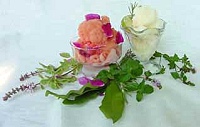 |
Food: Lavender Sorbet
Materials- Water, sugar, lemon, 9-10 stem heads and a food processor
Medicine: Facial cleanser
Part used- Dried flowers
Desired Medicinal Actions- Treatment of acne
Targeted Indications- Acne
Procurement-
Source- Radiance
Condition- Dried
Cost- 2.35 per ounce
Other Procurement Information- None Found
_____________________________________________________________________
Application/Preparation/Pharmacy: (7)

Application- Rinse for the face
Preparation-
- Add 1 teaspoon of lavender flowers to 1 cup of boiling water
- Let sit for 20 Minutes
- strain into a clean jar
- Rinse your face with the flower- water and see how good it feel and how pretty it makes your face.
Pharmacy- Once or twice a day
Reason/Purpose- To treat the onset of acne
Experience- Just started the treatment so no results yet
Cautions based on experience- Unlike many other essential oils, there are few safety notes to share with you. Lavender essential oil can be used neat, meaning without diluting it in a plant based carrier oil, but it must be done in small amounts and only for minor skin problems. However, it is advised to dilute lavender with a vegetable carrier oil such as olive oil, jojoba, sweet almond oil, etc., just to make certain that your skin doesn’t have an allergic reaction. Please be very careful when purchasing pure lavender essential oil to be used for minor medical burn treatment emergencies as you will need true lavender, the type containing the lowest amount of camphor, and NOT lavandin, the genus which has up to 8% camphor – a burn causing ingredient! Please do not take lavender essential oil internally!
Other Notes of Interest-The word “lavender” comes from the Latin "lavare" which means to wash. These fairies bring healing, protection, and aid in overcoming emotional blocks. In England, it was common practice for a bride to braid lavender into her hair to retain female power and luck. In Ireland, brides wore lavender garters to protect them from witchcraft. Lavender is mentioned in the Bible as a charm against the devil.
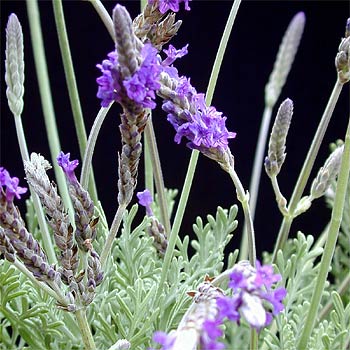
Sabrina White
Lavender
Winter 2006
References:
- Author Unknown Health Touch Data base online @ Http://www.Healthtouch.com
- Young, Paul Garden Patch @ Http://www.Mygardenpatch.com
- Lewis, Terri University of Kansas @ Http://www.umm.edu?altmed/Consconditions/Acnecc.html
- Author Unknown Sunset magazine @ Http://www.Sunset.com
- Worth, Charles S. Plants and Herbs Seattle, Washington: Alcove Publishing 2001
- Tierra, Lesley A kids Herb Book, Bandon, Oregon: Robert D. Reed Publishing 2000
Latin Name- Lavandula angustifolia
Common Name- Lavender, English Lavender
Family- Lamiaceae (Mint Family) aka; Labiatae
Origin- Western Mediterranean basin, in rocky, calcareous areas
Lavender is a perennial herb. It is about 1-3 feet high and 2-3 feet wide. Lavender can be used for many different uses. You can use the dried flowers and place them in the bubble bath for a soothing bath before bedtime.
For this you will take the dried lavender and place in a muslin bag. Then hang the muslin bag at the end of the facet so that the water will run over it. This will release the lavender through out the bath, leaving you with great smelling water and a relaxing bath.
Perfect for a long hard day.
Cautions: Use lavender externally, do not ingest lavender.